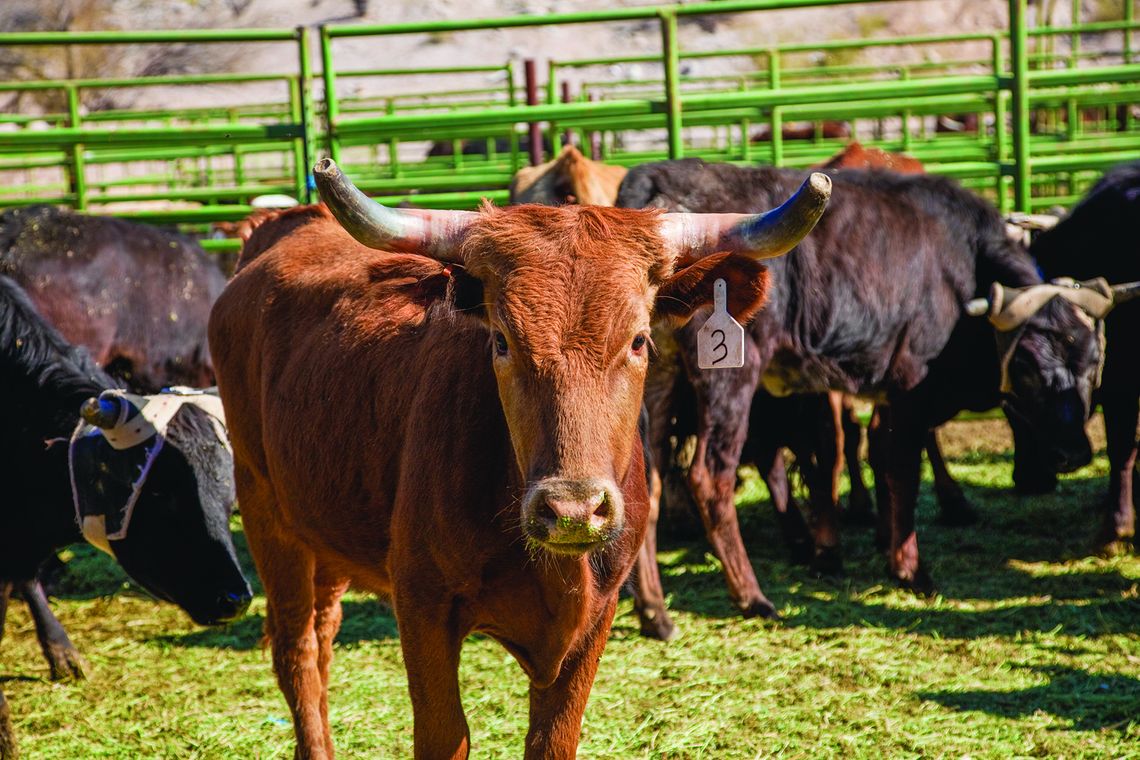A good bull is the cornerstone of any cow calf operation. Cows influence the genetic makeup of only one calf every year, but a bull has the opportunity to impact 26-50 calves depending on the breeding season. Making sure your bulls are able to locate and breed cows this breeding season is vital to success and a good way to test that is with a Breeding Soundness Exam, or BSE.
At a minimum, young bulls entering their first breeding season should have a BSE as well as older bulls that have had a health problem, injury, or scrotal damage due to extreme cold during the winter. Routinely having a veterinarian perform a breeding soundness exam 4-6 weeks prior to the breeding season on all bulls scheduled to be turned out with cows is a good idea. In light of weather events this winter, producers may want to schedule the exams earlier than normal so any bulls the veterinarian deems below acceptable could be scheduled for a re-test, and plans could still be made to replace any bulls that do not pass and are not expected to pass a re-test, prior to the breeding season. You’ll need to contact your veterinarian to set up an appointment which will consist of a physical exam, internal and external evaluation of the reproductive tract, and semen evaluation.
The physical exam looks at overall bull health. Bulls exert large amounts of energy during the breeding season, traveling and servicing cows. As such, they typically lose body condition over the course of the season. Because of this, they should go into breeding with fairly good cover. Abody condition score of 6 is the target. Sound feet and legs are also important as problems here can impact bull ability to travel and mount. Overall wellness is also noted as injured, sick, or old bulls are less likely to-successfully mate and may have lower quality semen.
An external and internal evaluation of the reproductive tract is done to ensure there are no obstructions or damage to the reproductive organs. The testes, spermatic cords, epididymis, and external underline are examined. Scrotal circumference is measured and noted as it directly relates to the total mass of sperm producing tissue and sperm cell normality. An internal examination is also conducted to detect any abnormalities in the internal reproductive organs.
Finally, a semen evaluation is done by examining a sample under a microscope. The veterinarian will estimate the percentage of sperm cells that are moving in a forward direction. This estimate is called “motility”. In addition, the sperm cells will be individually examined for proper shape or “morphology”. Less than 30 percent of the cells should be found to have an abnormal shape.
Any bull meeting all minimum standards for the physical exam, scrotal size and semen quality will be classed as a “satisfactory” potential breeder. Bulls that fail any minimum standard will be given a rating of “classification deferred.”
This rating indicates that the bull will need another test to confirm status. Mature bulls should be retested after six weeks. Mature bulls will be classified as unsatisfactorypotential breeders if they fail subsequent tests. Young bulls that are just reaching puberty maybe rated as “classification deferred”, and then later meet all of the minimum standards as they further mature.
Cows may take a ldtof our focus when it comes to herd fertility. However, for a complete herd fertility program, don’t: forget to pay attention to your bull health too.
—Ben Beckman is a beef systems Extension Educator serving the counties of Antelope, Cedar, Knox, Madison and Pierce. He is based out of the Cedar County Extension office in Hartington. You can reach him by phone: (402) 254-6821 or email: [email protected]. mailto:[email protected]
.jpg)











